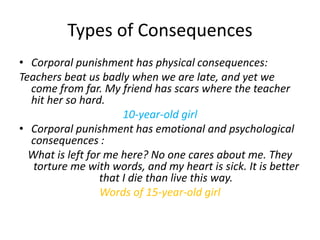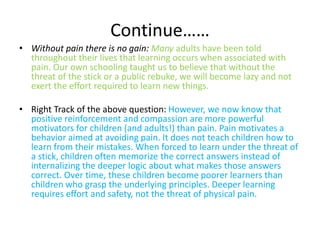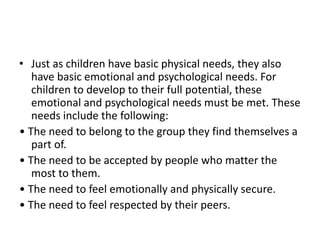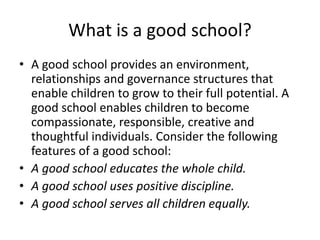The document discusses corporal punishment, which is defined as any physical punishment intended to cause pain or discomfort. It notes various physical and psychological consequences of corporal punishment, including lifelong damage, loss of interest in learning, increased absenteeism and dropout rates, and the normalization of violence. As alternatives, it suggests understanding factors that influence child behavior, meeting children's emotional needs, and establishing a teacher code of conduct. Positive discipline and non-violent conflict resolution are presented as more effective approaches that improve children's development and relationships.
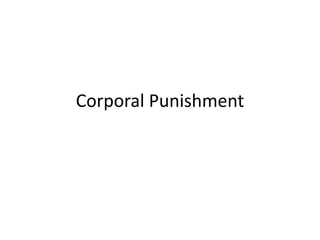

![Some facts about Corporal
Punishment
• It [corporal punishment] is too much and
happens every day and no one cares about it.
• When children grow up they keep what was
done to them in mind, and in the end they also
do the same to those younger than them,
especially at school.](https://image.slidesharecdn.com/pptoncorporalpunishment-140907093456-phpapp01/85/Ppt-on-corporal-punishment-3-320.jpg)


